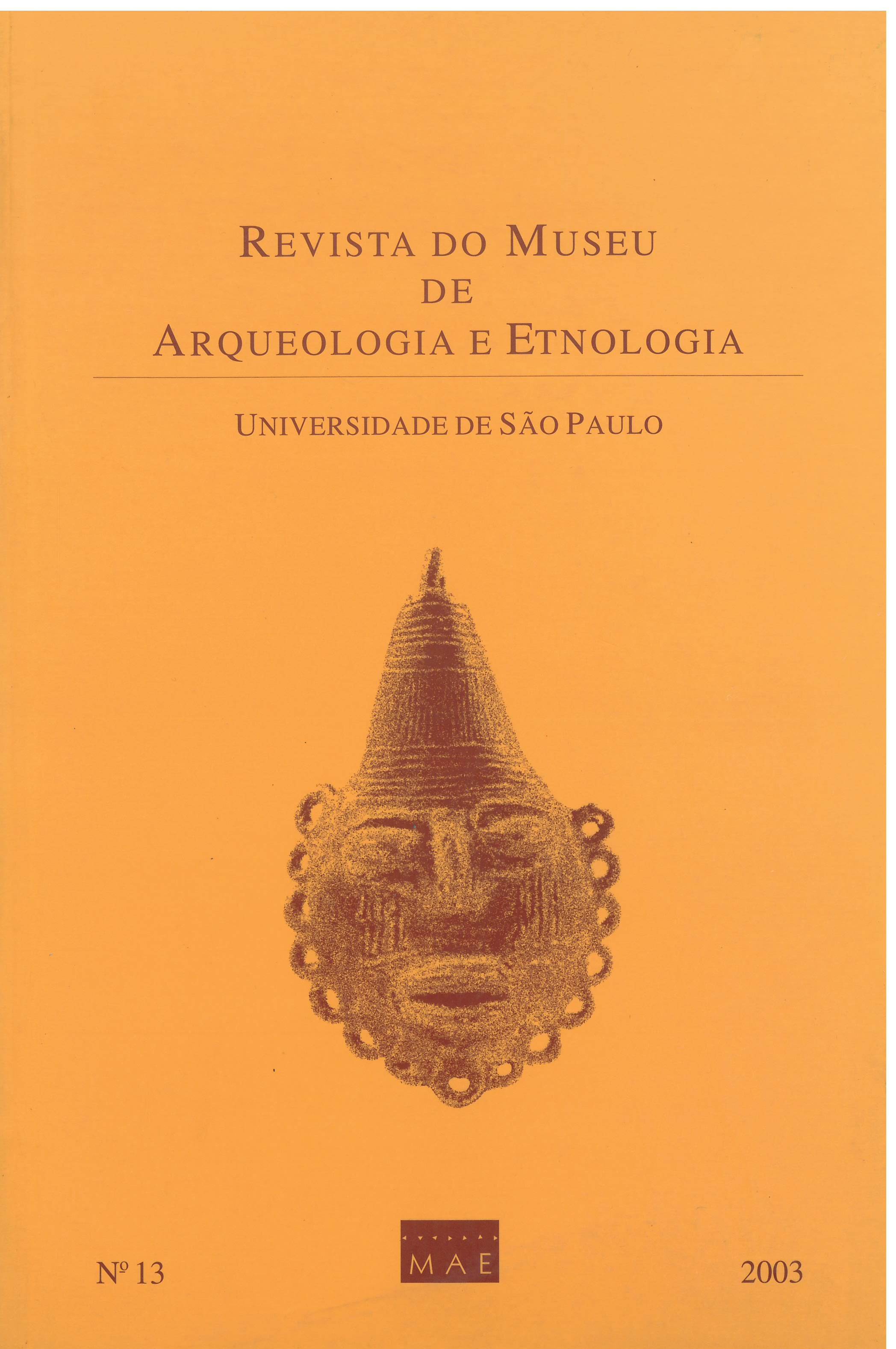EDXRF study ofTupi-Guarani archaeological ceramics.
DOI:
https://doi.org/10.11606/issn.2448-1750.revmae.2003.109492Palavras-chave:
Ceramic sherds -Tupi-Guarani, archaeological, pigment composition, paste composition, X-ray fluorescence.Resumo
A set of indian Brazilian pottery fragments belonging to Tupi-Guarani tradition has been studied by an archaeometric non-destructive technique. The pottery fragments were accidentally discovered in the Santa Dalmacia farm, sited near Cambé city at the north of Paraná Brazilian state. Each one of these fragments came from different ceramic recipients and their physical characteristics are very similar. The EDXRF measurements were performed employing both an X-ray tube and three radioisotope sources (Fe, Cd and Pu). The compositional data of the ceramics paste and pigments is investigated. For detection of the elements within the ceramic paste, the fragments were irradiated at the center of the lateral section, while several superficial areas with remaining plastic decoration were also chosen and irradiated at the convex and concave sides of each fragment. A paste-subtracted compositional data of the remaining pigments was statically extracted from the XRF analysis of each area. A program based on the graphic polygonal representation method was developed and used to correlate the representative intensity data of each fragment.Downloads
Os dados de download ainda não estão disponíveis.
Downloads
Publicado
2003-12-23
Edição
Seção
Estudos de Arqueoacústica e usos de tecnologias digitais
Licença
Copyright (c) 2003 Fernando R. Espinoza Quiñones, Carlos R. Appoloni, Adenilson O. dos Santos, Luzeli M. da Silva, Paulo F. Barbieri, Pedro H. Aragão, Virgílio F. do Nascimento Filho, Melayne M. Coimbra

Este trabalho está licenciado sob uma licença Creative Commons Attribution-NonCommercial-NoDerivatives 4.0 International License.
Como Citar
QUIÑONES, Fernando R. Espinoza; APPOLONI, Carlos R.; SANTOS, Adenilson O. dos; SILVA, Luzeli M. da; BARBIERI, Paulo F.; ARAGÃO, Pedro H.; NASCIMENTO FILHO, Virgílio F. do; COIMBRA, Melayne M. EDXRF study ofTupi-Guarani archaeological ceramics. Revista do Museu de Arqueologia e Etnologia, São Paulo, Brasil, n. 13, p. 199–210, 2003. DOI: 10.11606/issn.2448-1750.revmae.2003.109492. Disponível em: https://revistas.usp.br/revmae/article/view/109492.. Acesso em: 20 abr. 2024.


















